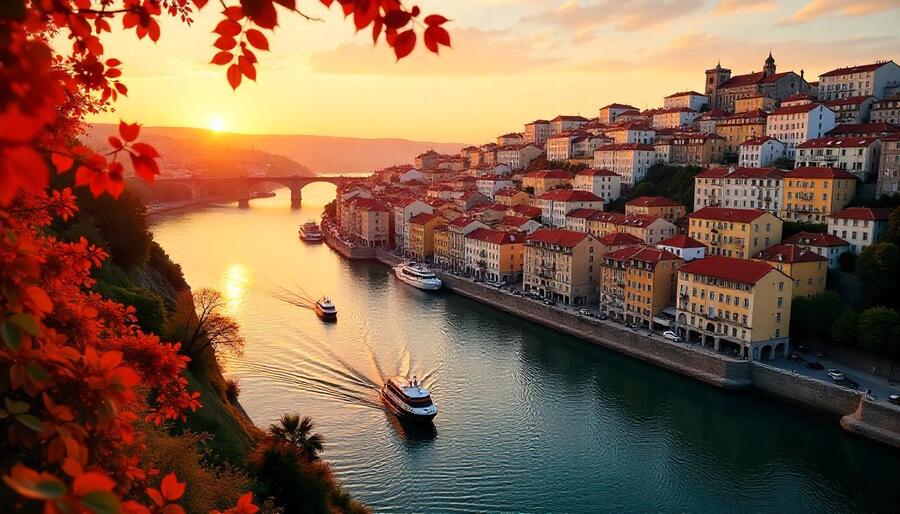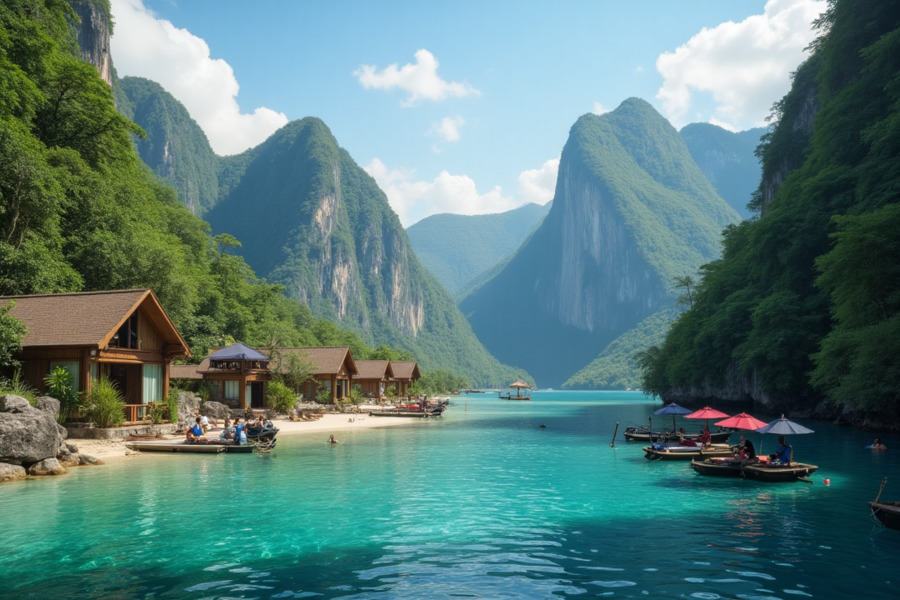≡-France, Spain, Portugal, Italy, and Greece Grapple with New Wave of Extreme Heat as Tourists Endure Disruptions and Iconic Sites Close Across Europe – Viral of Today
<> Viral of Today <>
Home » Greece » Greece Travel News » France, Spain, Portugal, Italy, and Greece Grapple with New Wave of Extreme Heat as Tourists Endure Disruptions and Iconic Sites Close Across Europe Thursday, July 3, 2025As France, Spain, Portugal, Italy, and Greece are caught off guard with a new and unprecedentedepisode of extreme hot weather during the summer months, European travel is experiencing dramatic interruptions. Soaring temperatures—up to a record one hundred fifteen degrees Fahrenheit—have prompted the closure of iconic attractions such as the Eiffel Tower, triggered a heat-induced spike in hospitalizations, and overwhelmed major tourist destinations, particularly those at coastal and urban locations. With the Mediterranean experiencing marine heatwaves and infrastructure at full capacity, the current climate crisis is not only remodeling Europe’s travel industry but is also straining the holiday travel experience at its peak in terms of safety, sustainability, and enjoyment.As Europe welcomes millions of tourists this summer, a relentless and unforgiving heatwave is putting unprecedented strain on the continent’s tourism infrastructure. From Western Europe to the Mediterranean, soaring temperatures—some climbing above one hundred fifteen degrees Fahrenheit—are forcing landmark closures, threatening public health, and challenging the long-term sustainability of travel in popular destinations like France, Spain, Portugal, Italy, and Greece.The seasonal norm of wind, rain, and even snow rarely deters tourists in Europe. However, the blistering heat currently gripping the continent may be changing that pattern. With the mercury pushing beyond tolerable levels in many regions, even the most seasoned travelers are reconsidering their plans.Portugal Scorches as Temperatures Near Record HighsPortugal is experiencing some of the highest temperatures in Europe this season. According to the country’s meteorological agency, IPMA, temperatures around the central town of Mora recently peaked at an astonishing one hundred fifteen degrees Fahrenheit. These readings are among the highest recorded on the continent and are causing severe distress not just to the environment, but to local residents and the tourism sector alike.Extreme sun exposure and unrelenting heat have created hazardous conditions, with fires threatening rural landscapes and health advisories being issued regularly. For travelers, especially those from cooler climates, the intensity has made outdoor activities increasingly uncomfortable and risky.Italy Sees a Surge in Heat-Related HospitalizationsItaly, one of Europe’s most visited countries during the summer months, has also been hit hard by the oppressive heat. Hospitals across the country have reported a fifteen to twenty percent increase in admissions due to symptoms related to excessive heat exposure, including dehydration, heat exhaustion, and heatstroke. Tragically, several heat-related fatalities have occurred, further highlighting the danger.Cities like Rome, Florence, and Venice, typically bustling with tourists in July, are now facing medical strain alongside tourism disruption. With stone streets radiating heat and limited shade in historical areas, both tourists and locals are at greater risk of heat-related illness.Eiffel Tower Closure Symbolizes Widespread Travel Disruption in FrancePerhaps the most symbolic impact of this climate event is in France, where Paris’ world-renowned Eiffel Tower was forced to close its summit on July 1 and 2. The reason: extreme heat that reached one hundred four degrees Fahrenheit, rendering the upper levels of the structure inhospitable for visitors and staff.While the tower’s lower viewing decks remained accessible, the closure of the summit was a major disappointment for thousands of visitors. Many of them turned to alternative vantage points, such as the Trocadéro Gardens across the Seine River, where crowds gathered to cool off in the public fountains—an unofficial but increasingly popular way to escape the heat.The brief closure of the Eiffel Tower highlights just how critical the situation has become—showing that even world-famous, economically vital landmarks are no longer immune to the escalating impacts of extreme heat and climate change.Spain and Greece Struggle Under a Warming MediterraneanFurther south, Spain and Greece—countries famous for their sunny coastal getaways—are struggling with their own climate extremes. A marine heatwave in the Mediterranean is compounding the effects of the heat dome currently spread across the continent.Water surface temperatures in the Mediterranean Sea have surged to between seventy-eight and eighty-six degrees Fahrenheit, which scientists warn prevents nighttime cooling. According to Spain’s meteorological services, this phenomenon is significantly diminishing nighttime respite and leaving both residents and travelers with little relief from the day’s heat.Beaches that typically offer a reprieve are now experiencing overcrowding, and in some places, closures due to safety concerns. Coastal towns from southern France to the Greek islands are reporting dwindling tourism satisfaction as heat continues to erode the comfort and charm usually associated with these summer retreats.Cooling Off—If You CanWhile some European visitors are adapting creatively to the extreme conditions—seeking relief in pools, mountain lakes, and shaded forests—others have found the heat too intense to manage. For travelers unprepared for the climate shift, the experience has been less a dream vacation and more a test of endurance.Hotels are being forced to upgrade air conditioning systems at short notice, while many local governments are opening temporary cooling shelters. Public transport networks, often not designed for such heat, are also under stress, with delays and service disruptions increasingly common.Tourist guides are advising shortened sightseeing schedules and encouraging early morning or evening visits to landmarks to avoid midday peaks in temperature.Climate Impacts Go Beyond the WeatherThe tourism industry accounts for approximately ten percent of the European Union’s total gross domestic product. The widespread travel complications caused by this year’s heatwave are therefore not just a seasonal inconvenience but a significant economic concern.As more cities and regions close their most popular attractions, and others struggle to accommodate crowds during unrelenting heatwaves, the entire economic model built around summer travel is being challenged.Beyond economics, the environmental toll is growing. In urban areas, excessive energy use for cooling is spiking emissions, while drought-stricken rural regions are battling water shortages exacerbated by increased tourism demand. Local farmers, cultural preservationists, and conservationists are increasingly vocal about the strain this tourism model is placing on infrastructure and ecosystems.Rising Voices Against Overtourism and Climate StressAmid escalating climate challenges, mounting frustrations over unchecked tourism growth have intensified to critical levels. Local activists in cities like Barcelona have staged high-profile demonstrations criticizing the overcrowding and overconsumption that come with mass tourism.One protest that made international headlines earlier this year saw demonstrators using water pistols to symbolically “fight back” against the deluge of tourism in their neighborhoods. Their message was clear: climate change is magnifying the already unsustainable impact of large-scale tourism.In the face of record temperatures and resource scarcity, local authorities across Europe are being urged to reassess their summer travel strategies. Many cities are now reevaluating infrastructure investments, regulating accommodation permits, and even limiting the number of cruise ships or tour buses allowed in central areas.A Future of Instability for Summer Travel in Europe?This ongoing heatwave is not a one-time event but a clear indicator of an escalating climate trend gripping Europe. Scientists warn that Europe is warming at a faster rate than many other parts of the world, and summer temperatures are projected to continue rising year after year.This trajectory presents a stark challenge for Europe’s tourism-dependent economies. Policymakers will need to balance the economic benefits of summer travel with the health and environmental costs of encouraging peak-season mass tourism in an era of climate uncertainty.Travelers themselves will also have to adjust—reconsidering not just where they travel, but when. Off-season travel may become increasingly popular as a strategy to avoid dangerous heat while still enjoying Europe’s rich cultural and natural offerings.Europe’s once-predictable summer travel season is being radically reshaped by the realities of climate change. The searing heatwave currently engulfing France, Spain, Portugal, Italy, and Greece is disrupting everything from sightseeing to public health, economic activity, and environmental sustainability.With key landmarks like the Eiffel Tower closing, hospitalizations on the rise, and local resistance to overtourism growing louder, it is clear that the continent’s tourism sector must evolve. Heatwaves are no longer anomalies—they are becoming part of the summer forecast.France, Spain, Portugal, Italy, and Greece are facing a record heatwave that is impacting tourism with monuments shutting down, rising health emergencies, and stretched infrastructure impacting tourists across Europe. The severe weather is causing the peak travel season a nightmare for tourists and hosting destinations.To ensure Europe remains a thriving destination for millions of travelers while protecting its citizens, ecosystems, and long-term economic health, the continent must embrace forward-thinking tourism strategies and invest in infrastructure built to withstand a changing climate.«Enjoyed this post? Never miss out on future posts by following us»
This information will surprise you!
See also
- Read until the end to discover everything.
- Important information you need to know.
- Interesting facts and helpful tips.
Conclusion
Did you enjoy the news? Keep following us daily!













